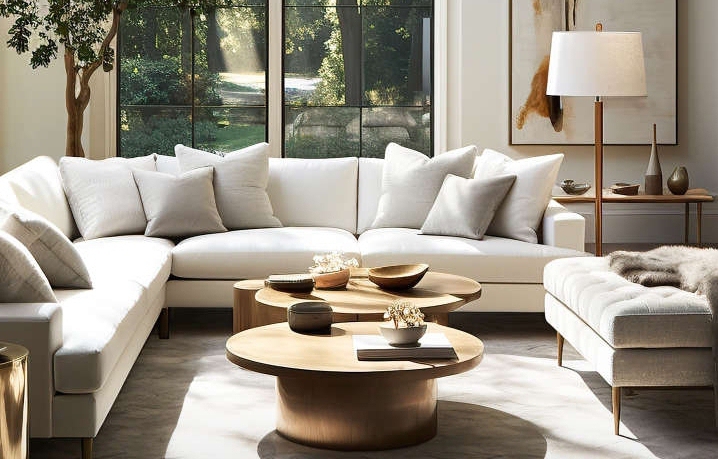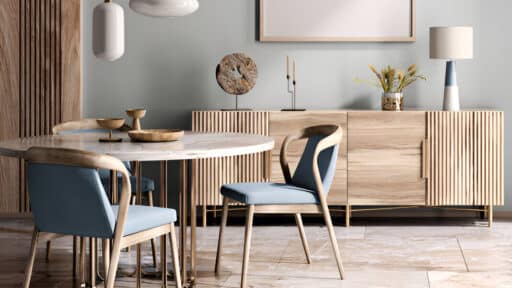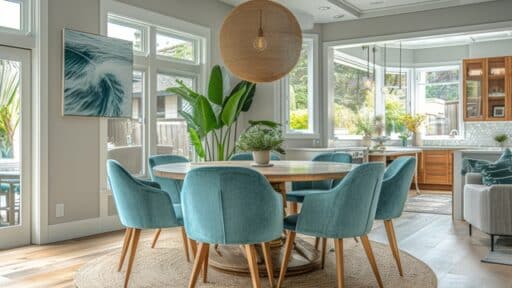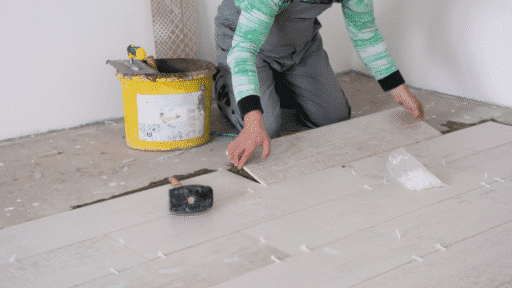Your living room is more than just a gathering place; it’s a canvas waiting to be transformed into a reflection of your personal style and taste. A well-styled sofa can serve as the centerpiece of this vital space, setting the tone for comfort and aesthetics.
But, how do you elevate your sofa from a simple seating arrangement to a stunning focal point?
1. Introduction to Sofa Styling
The living room is often the heart of a home—a place where family gathers, friends converge, and memories are made. At the center of this vibrant space usually lies the sofa, serving not just as a functional piece of furniture but also as a canvas for personal expression.

Sofa styling is an art that goes beyond simply arranging cushions or throwing a blanket over the armrest; it’s about creating an inviting atmosphere that reflects your unique style while maximizing comfort and functionality.
2. Understanding Your Living Room Layout
Before you dive headfirst into styling your sofa, it’s essential to take a step back and evaluate your living room layout. Understanding the spatial dynamics of your room lays the groundwork for creating a harmonious and inviting environment. Start by considering the room’s dimensions and shape—whether it’s a cozy nook or an expansive open space—as this will influence your sofa placement and overall decor.
Take note of the focal points in your living room. Is there a beautiful fireplace that draws the eye, or perhaps a stunning view through a large window? Positioning your sofa to face these focal points not only enhances visibility but also creates a natural flow within the space. Think about the pathways and movement within the room as well; ensure that there’s a clear and inviting route for guests to navigate without feeling cramped.
When considering the layout, also factor in your lifestyle. If you frequently entertain guests or have a family that enjoys movie nights, you might want a configuration that encourages conversation and interaction. On the other hand, if your living room serves as a tranquil retreat for reading or relaxation, you might prefer a cozier arrangement that promotes a sense of intimacy.
Lastly, don’t forget about the balance of the room. Integrating your sofa with complementary furniture pieces—such as chairs, coffee tables, and accent tables—creates visual harmony. Remember to play with scale and proportion; a large sectional might be perfect for spacious areas, while a sleek loveseat could be ideal for smaller rooms.
3. Choosing the Right Sofa for Your Space
Choosing the right sofa for your space is the foundation of a well-styled living room. It’s not just about aesthetics; the sofa serves as the centerpiece of your room and has the power to influence both the functionality and flow of the entire space. Before you dive into selecting fabrics and colors, take a step back and assess your room’s dimensions and layout.
Start by measuring your space to ensure that the sofa you choose will fit comfortably without overwhelming the room. Consider the size of your living area—whether it’s a cozy nook or an expansive great room— and opt for a sofa that complements the scale of your space. A large, plush sectional may be perfect for a spacious area, inviting gatherings and relaxation, while a sleek, minimalist loveseat might be ideal for smaller rooms, providing seating without a bulky presence.
Next, think about the style and function of your living room. Are you aiming for a contemporary vibe or a more traditional look? Your sofa should reflect your personal style and harmonize with other furnishings. For example, a mid-century modern sofa with clean lines can add a touch of sophistication, while a cozy, oversized sofa with plush cushions invites comfort and warmth.
Don’t forget to consider the material as well. Leather, for instance, can bring an air of elegance while being durable and easy to clean, making it perfect for families with kids or pets. On the other hand, soft fabrics like velvet or linen can create a cozy, inviting atmosphere that encourages relaxation.
Finally, think about color and pattern. A neutral sofa provides a versatile backdrop that allows you to play with colorful accents and patterns in your throw pillows or decor accessories. Alternatively, a bold, patterned sofa can serve as a statement piece, energizing the room and becoming a conversation starter.
4. Color Schemes and Fabric Choices
Start by considering a color palette that resonates with the overall vibe you want to create. If you’re aiming for a cozy, inviting atmosphere, warm tones like terracotta, soft yellows, or rich browns can be incredibly effective. For a more modern and sleek look, you might opt for cool tones such as deep blues, grays, and crisp whites. Don’t shy away from bold colors—think vibrant jewel tones or trendy pastels—but be mindful of balancing them with neutral shades to avoid overwhelming the space.
Fabric selection is equally important in achieving the desired aesthetic and comfort level. Luxurious velvet or soft chenille can add a touch of elegance, while durable canvas or cotton blends are perfect for a more casual, family-friendly environment.
Consider the texture of the fabric, as well; a mix of smooth and textured materials can create visual interest and depth. For instance, pairing a sleek leather sofa with plush throw pillows or a chunky knit blanket can introduce a delightful contrast.
Don’t forget about the practical aspects of your fabric choices, either. If you have pets or young children, look for materials that are stain-resistant and easy to clean, without sacrificing style. Performance fabrics have come a long way, offering a variety of colors and patterns without compromising on durability.
Incorporating your chosen colors and fabrics into your sofa styling can revitalize your living room. Layering various textures can create an inviting focal point. For example:
- A soft throw blanket draped over a sleek leather couch, accompanied by a mix of patterned and solid cushion
- Introducing accent pieces, such as decorative pillows in complementary hues or a chic throw, to tie the entire look together
5. Layering Textures: Cushions and Throws
Layering textures with cushions and throws is one of the most effective and visually appealing ways to elevate the style of your sofa.
Start with the basics: choose a foundational cushion that complements your sofa’s color and style. From there, let your creativity run wild! Mix and match different textures and patterns—think sleek velvet, woven cotton, or soft linen. The key is to create a delightful contrast that catches the eye. For instance, if you have a smooth leather sofa, consider adding rough-hewn knit or fluffy faux fur cushions. This juxtaposition not only enhances visual interest but also makes your seating area feel more dynamic and layered.
Don’t shy away from incorporating throws into the mix. A beautifully draped throw can transform the entire look of your sofa. Opt for a chunky knit for a cozy vibe, or choose a lightweight, patterned throw for a splash of color and personality. Drape it casually over one arm of the sofa or let it cascade down the back for an effortlessly chic appearance.
Experiment with arrangements too; stack cushions of varying sizes in the back for support while placing smaller, decorative cushions in front, creating an inviting, layered look. You can even play with color palettes—go for monochromatic hues for a sleek, sophisticated vibe, or mix bold colors and patterns for a more eclectic and playful atmosphere.
Incorporating cushions and throws not only enhances the aesthetic appeal of your living room but also reflects your personal style. This simple yet impactful styling tip will make your sofa the focal point of your space, inviting friends and family to gather and unwind in comfort. Embrace the art of layering, and watch your living room transform into a stylish, cozy haven!
6. Creating a Focal Point with Your Sofa
Creating a focal point with your sofa can elevate your living room from ordinary to extraordinary, serving as both a functional seating area and a striking centerpiece. The sofa is often the largest piece of furniture in the room, making it the perfect candidate to draw the eye and set the tone for your entire space.
To achieve this, start by selecting a sofa that not only complements your personal style but also contrasts with the surrounding decor. For instance, if your walls are painted in soft, neutral tones, consider a bold, vibrant hue for the sofa—think deep emerald greens or rich burnt oranges. Alternatively, a patterned upholstery can infuse energy and character into a minimalist room, allowing the sofa to become a statement piece that sparks conversation.
Positioning is equally crucial when creating a focal point. Place your sofa in a way that allows it to face the primary entrance of the room, inviting guests to gather and engage. Add a stylish area rug beneath it to ground the space and further emphasize the sofa as a central feature.
Accessorizing wisely can enhance your focal point even more. Layer the sofa with an array of textured throw pillows in coordinating colors, varying sizes, and shapes to create visual interest. A cozy throw draped over one arm can add warmth and approachability. Lastly, consider incorporating a complementary coffee table or side tables nearby, adorned with books, candles, or fresh flowers, to frame the sofa and enhance its impact.
7. The Art of Arrangement: L-Shaped vs. U-Shaped
When it comes to optimizing the layout of your living room, the arrangement of your sofa can dramatically influence both the aesthetics and functionality of the space. Two popular configurations that offer distinct advantages are the L-shaped and U-shaped sofas. Understanding the nuances of each can help you make an informed choice that enhances your living environment.
L-Shaped Sofas: Versatility and Space Efficiency
L-shaped sofas are celebrated for their ability to fit snugly into corners, making them an ideal choice for smaller living rooms or open-concept spaces. This layout not only maximizes floor space but also creates a cozy nook that encourages conversation and relaxation. You can easily pair an L-shaped sofa with a chic coffee table, a couple of accent chairs, or a plush pouf, allowing for a dynamic seating arrangement that adapts to your lifestyle.
Styling tip: To elevate the look of your L-shaped sofa, consider layering textured throw pillows and a soft blanket. This not only adds visual interest but also invites guests to sink in and feel at home. Additionally, placing a stylish area rug underneath can help define the seating area, creating a warm and inviting atmosphere.
U-Shaped Sofas: Gather Around
For larger living rooms, U-shaped sofas provide an expansive seating arrangement that encourages social interaction. This configuration creates a welcoming circle, perfect for hosting gatherings, game nights, or simply enjoying family time. The U-shape fosters a sense of intimacy, allowing everyone to engage easily without straining to hear or be heard.
Styling tip: Enhance the U-shaped sofa with a combination of different-sized cushions to create a layered effect. A central coffee table adorned with a few decorative items, like a stack of books or a vibrant vase, will serve as a focal point while still maintaining the inviting nature of the setup. Consider adding a few side tables for convenience, ensuring that snacks and drinks are always within reach.
Making Your Choice
Ultimately, the decision between an L-shaped and U-shaped sofa boils down to the size of your space and your lifestyle needs. L-shaped sofas shine in smaller areas, offering versatility and a snug fit, while U-shaped sofas create a grand, communal atmosphere that’s perfect for entertaining.
8. Incorporating Accent Chairs for Balance
Incorporating accent chairs into your living room design is a game-changer when it comes to achieving balance and harmony in your space. While a beautiful sofa often serves as the centerpiece of the room, accent chairs can complement your overall aesthetic, add character, and enhance functionality. Think of them as the stylish sidekicks to your main attraction!
When selecting accent chairs, consider the style, color, and material that will best coordinate with your sofa. For a modern look, opt for sleek, minimalist chairs with clean lines and bold colors. If your sofa boasts a classic design, you might choose vintage-inspired chairs with rich upholstery and intricate detailing. Mixing materials, such as pairing a plush fabric chair with a leather sofa, can create an inviting contrast that adds depth to your living room.
Positioning is key. Flank your sofa with matching chairs to create a cohesive seating arrangement that encourages conversation and interaction.
Alternatively, you could place an accent chair in a cozy reading nook, inviting guests to relax with a book or a cup of coffee. Don’t shy away from mixing and matching different styles; an eclectic approach can add a layer of interest and charm to your decor.
To elevate the look further, consider adding throws and decorative pillows to your accent chairs. This ties the room together by introducing complementary colors and textures.
9. Styling with Coffee Tables and Side Tables
Begin by selecting a coffee table that complements the style of your sofa. For a modern setting, consider a sleek, glass-top table with minimalist lines. If your decor leans more toward the rustic or bohemian side, a reclaimed wood coffee table can introduce warmth and texture.
Once you’ve chosen the right table, it’s time to style it. Layering is key—start with a large, central piece like a decorative tray or a stack of coffee table books, which can serve as both a visual anchor and a platform for smaller accents.
Incorporate elements like candles, potted plants, or unique sculptures to add dimension and interest. Don’t forget to play with varying heights; using items of different sizes can create a dynamic arrangement that draws the eye.
Side tables, often overlooked, can also elevate your living room’s style. Flank your sofa with stylish side tables that not only provide practicality but can also act as accent pieces. Use them to display a chic lamp, a framed photograph, or a small vase filled with fresh flowers. Mixing materials—like a marble top with metal legs—can create a striking contrast that adds depth to your space.
10. Adding Greenery: Plants and Flowers
Start by selecting a variety of plants that suit your lifestyle and the lighting conditions of your room. For bright, sun-drenched spaces, vibrant succulents or flowering plants like geraniums can add a cheerful touch. If your living room receives less natural light, consider resilient options like pothos or snake plants, which thrive in lower light conditions and require minimal maintenance.
To create visual interest, use an assortment of pots and planters that complement your sofa’s style. For a modern aesthetic, sleek ceramic or metallic pots can provide a contemporary look, while rustic wicker or terracotta pots can enhance a more traditional or bohemian vibe. Grouping plants at varying heights can also create an eye-catching display; consider using a plant stand or arranging them on floating shelves to draw the eye upward.
In addition to potted plants, fresh flowers can inject a burst of color and fragrance into your living room. A simple vase of seasonal blooms on your coffee table can serve as a stunning focal point, instantly brightening the space. Don’t hesitate to rotate your floral arrangements to keep the decor feeling fresh and dynamic.
Lastly, consider incorporating greenery through wall-mounted planters or hanging planters that can add depth to your walls. This not only saves floor space but also creates a unique visual element that can enhance the overall design of your living room.
11. Utilizing Wall Art and Decor around the Sofa
Start by choosing a focal point for your wall decor. A large, eye-catching piece of art—be it a vibrant painting, an oversized photograph, or an abstract print—can draw the eye and serve as a stunning backdrop for your sofa. Consider the color palette of the artwork; it should either complement or contrast elegantly with your sofa’s upholstery, creating a harmonious balance.
To add depth and interest, think beyond a single piece of art. Create a gallery wall by mixing and matching various frames and artworks. Incorporate smaller pieces, such as framed prints, mirrors, or even shelves with decorative items like vases and books. Layering different textures and shapes can add dimension and make the space feel curated and intentional.
Don’t forget about the importance of lighting in showcasing your wall art. Wall sconces or a stylish floor lamp can enhance the ambiance and highlight your decor, making it a focal point even when the sun sets.
Lastly, consider adding decorative elements that relate to the sofa itself. This could be a striking wall-mounted shelf that displays your favorite books or plants, or decorative hooks that hold your throws, tying functionality with style.




